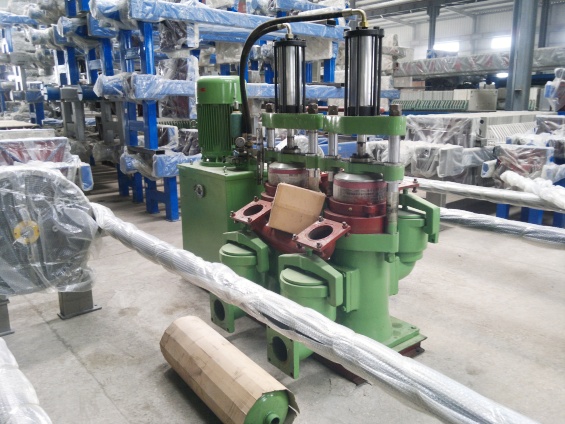
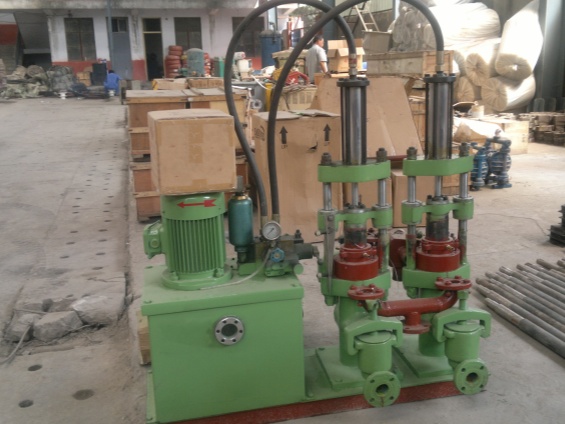
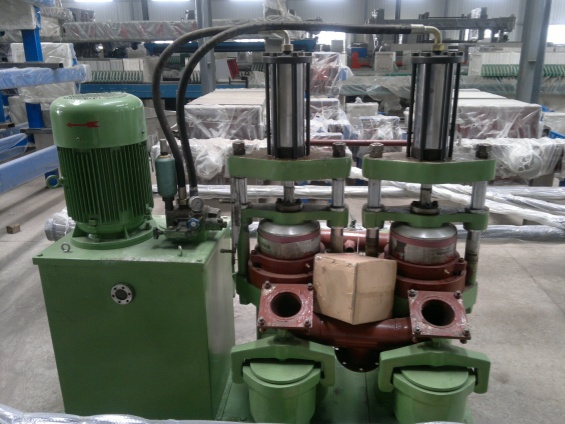
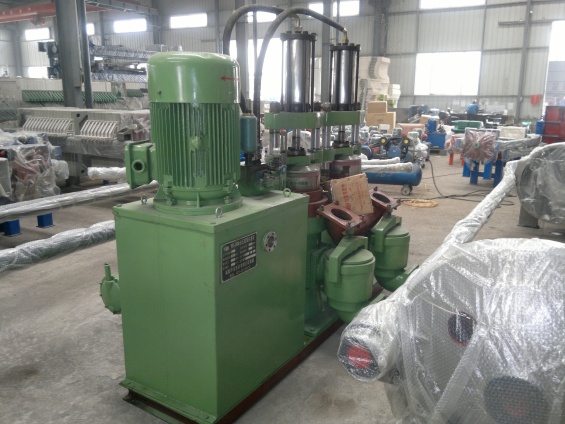
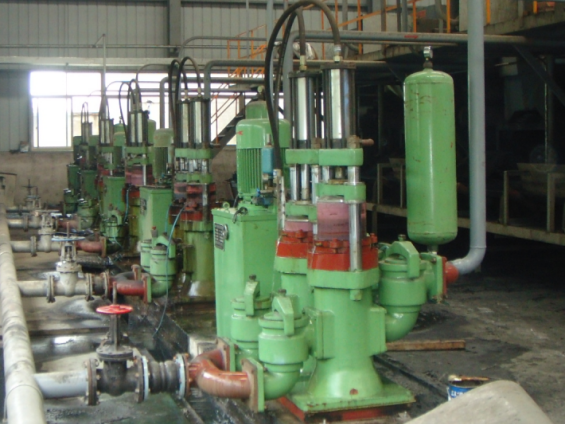
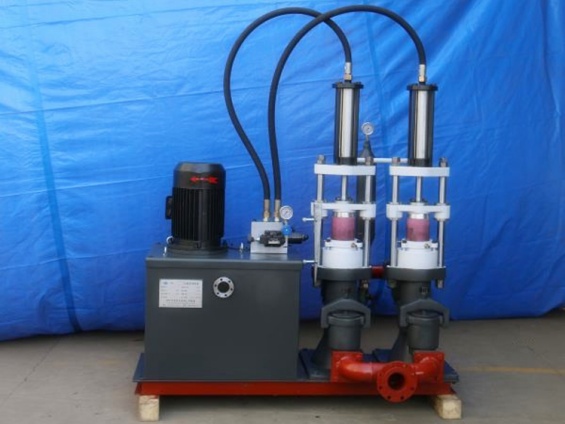






The plunger pump is a hydraulically driven double-bar double-acting positive displacement pump. With α-alumina as the plunger, it has high wear resistance and corrosion resistance. It is an ideal product for various types of solid-liquid separation when used with a filter press.
The plunger pump is a hydraulically driven double-bar double-acting positive displacement pump. With α-alumina as the plunger, it has high wear resistance and corrosion resistance. It is an ideal product for various types of solid-liquid separation when used with a filter press. Compared with centrifugal pumps, screw pumps, and rotor pumps, this pump has the following advantages: low pressure power, low wear and long life, adjustable constant temperature function, and maintenance costs are only one-tenth of centrifugal pumps, screw pumps, and rotor pumps, which reduces the cost of use and reduces electricity consumption for users.
The pump can automatically control the output flow and set the pressure unchanged. A pressure value is set according to the actual working conditions. When the pressure rises to the set value, the pressure stops rising. At this time, the flow of the pump can automatically change the operating speed between zero and large flow according to actual needs and keep the set pressure unchanged. It is driven by hydraulic pressure, with high pressure, quick pressure adjustment, and smooth operation. The α-alumina ceramic plunger has low wear, convenient operation, installation and maintenance, low cost and long life.
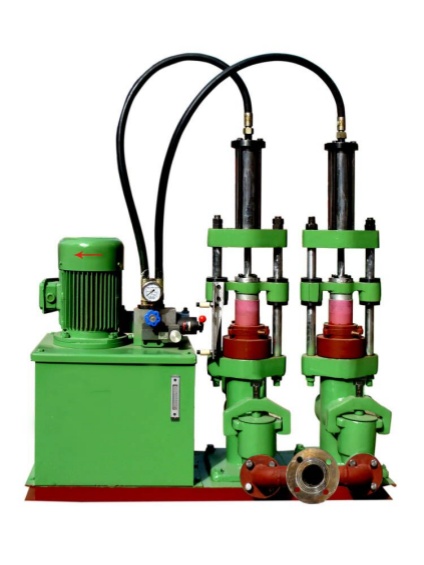
Hydraulic Drive: The motor drives the gear pump, converting low-pressure hydraulic oil into high-pressure oil (up to 4.0 MPa). This high-pressure oil then alternately enters the dual hydraulic cylinders through a reversing valve, driving the reciprocating pistons.
Plunger Volume Change: The hydraulic cylinder pistons are rigidly connected to the ceramic plunger. The reciprocating motion of the pistons directly drives the pistons' synchronous movement within the pump cylinder. When the plungers are pulled outward, the pump chamber volume increases, creating negative pressure; when the plungers are pushed inward, the pump chamber volume decreases, generating high pressure.
Self-priming and Discharge Cycle: When the plungers are pulled outward, creating negative pressure, the suction valve automatically opens and the discharge valve closes, allowing material to be self-primed into the pump chamber due to the pressure differential. When the plungers are pushed inward, increasing pressure, the suction valve closes and the discharge valve opens, transferring the high-pressure material to the filter press chamber, completing a single transfer cycle.
1. Wear resistance: The plunger is made of alumina ceramics and finely ground. The hardness is above HLC8.5 and the surface roughness is 0.4um. There is no shear movement between the plunger and the conveyed material, which is suitable for conveying materials containing sand and solid particles.
2. Strong self-priming ability: plunger vacuum pumping method, self-priming ability 4-8 meters (material specific gravity determines the change in suction range)
3. Adjustable constant pressure automatic variable: The working pressure of the plunger mud pump is adjustable and can be adjusted arbitrarily within the range of 0-20 kg. The adjusted pressure will not change due to changes in the output flow of the pump, and the set pressure will remain unchanged. Even if the outlet of the running pump is closed, the pressure will not change.
4. High pressure: The maximum pressure of ordinary models is 20 kg. At the same time, when the pressure is ≥5 kg and the flow rate is the same, the motor power of the plunger mud pump is 1 to 2 models smaller than other types of pumps.
5. Simple operation: Pressure adjustment only requires tightening or loosening the pressure regulating valve. After adjusting the pressure, lock it and no need to adjust it again in the future.
6. Low cost of use: The wearing parts of the pump are valve plates and plunger seals. The replacement cycle is 3-6 months for ceramic slurry and 6-12 months for municipal sludge.
7. Long service life: The service life is at least 15 years.
8. Customized production: According to the actual working conditions of each user, flexible configuration and customized products suitable for customer production needs.
It is used for spray drying of ceramic slurry, high pressure spray combustion of water-coal slurry, long distance transportation of clean (dirty) water, various suspended liquids, slurry, and liquid containing sand, and is also widely used for feeding of filter presses.
|
Type |
Rated flow rate (m3/h) |
Pressure ranges (Mpa) |
Rated pressure (Mpa) |
Stroke (mm) |
Motor power (kw) |
Dimenaion (mm) |
Inlet/Outlet flange |
|
TBYB85 |
2.8 |
0-2.5 |
2 |
220 |
4 |
1290*1050*1500 |
DN50/DN40 |
|
TBYB120 |
7.1 |
0-2.5 |
2 |
250 |
5.5 |
1600*1150*1600 |
DN80/DN65 |
|
TBYB140 |
10 |
0-2.5 |
2 |
250 |
7.5 |
1600*1200*1600 |
DN80/DN65 |
|
TBYB200 |
19 |
0-2.5 |
2 |
250 |
18.5 |
1700*1300*1900 |
DN100/DN80 |
|
TBYB250 |
30 |
0-2 |
1.8 |
250 |
22 |
1940*1600*2200 |
DN125/DN100 |
|
TBYB300 |
40 |
0-2 |
1.8 |
250 |
30 |
2100*1800*2200 |
DN125/DN125 |
|
TBYB400 |
80 |
0-1.8 |
1.6 |
350 |
55 |
2480*2500*2600 |
DN150/DN150 |